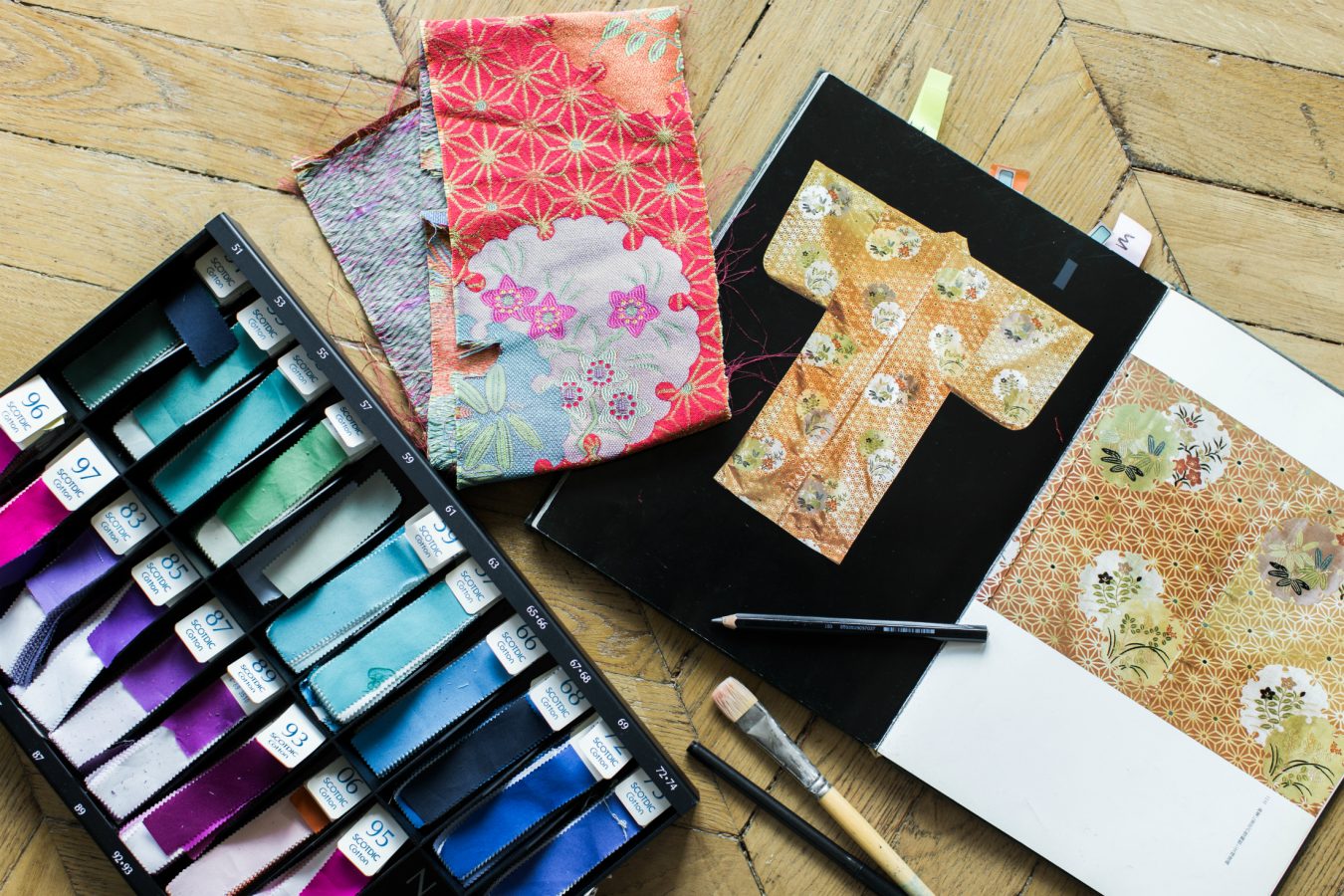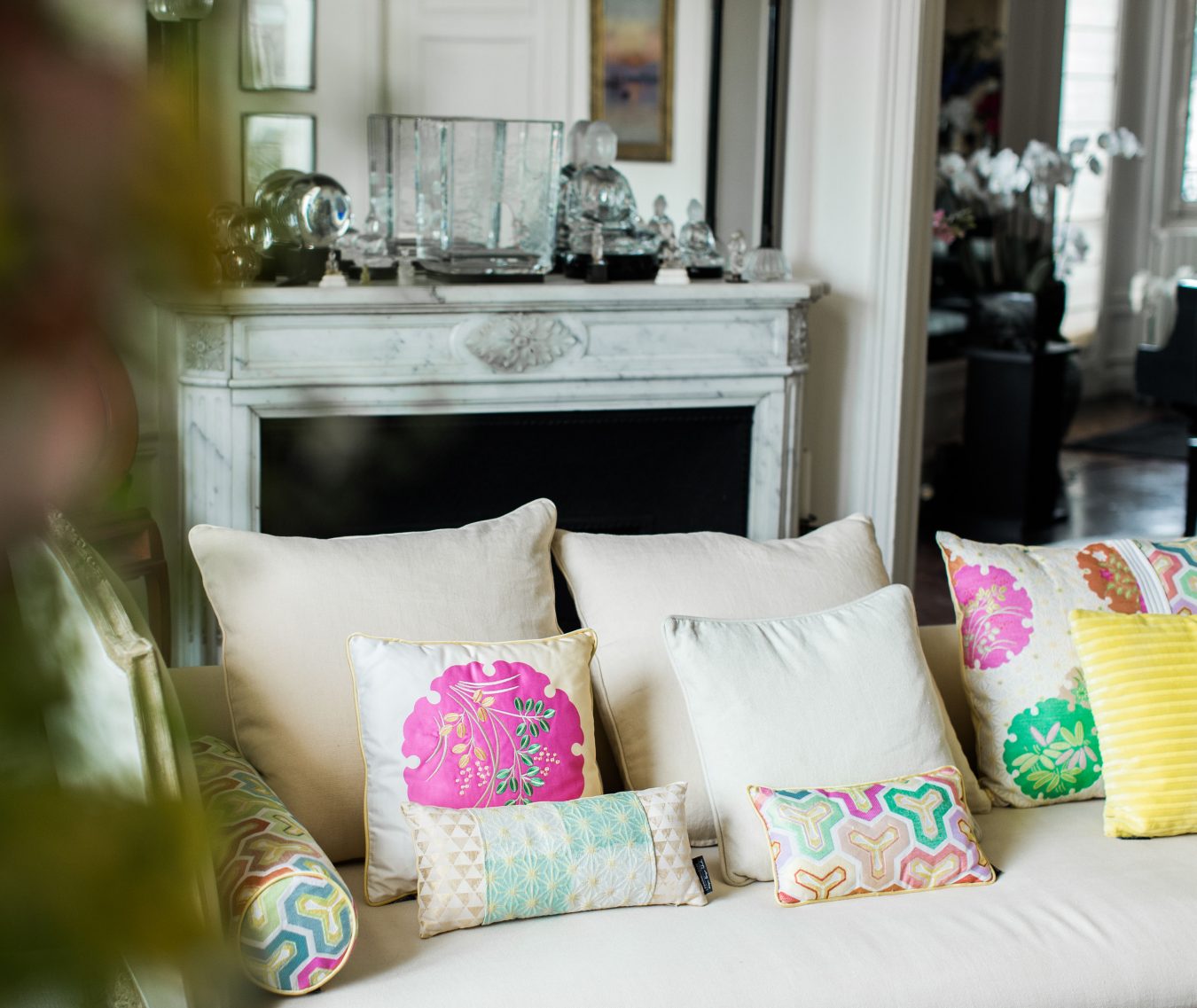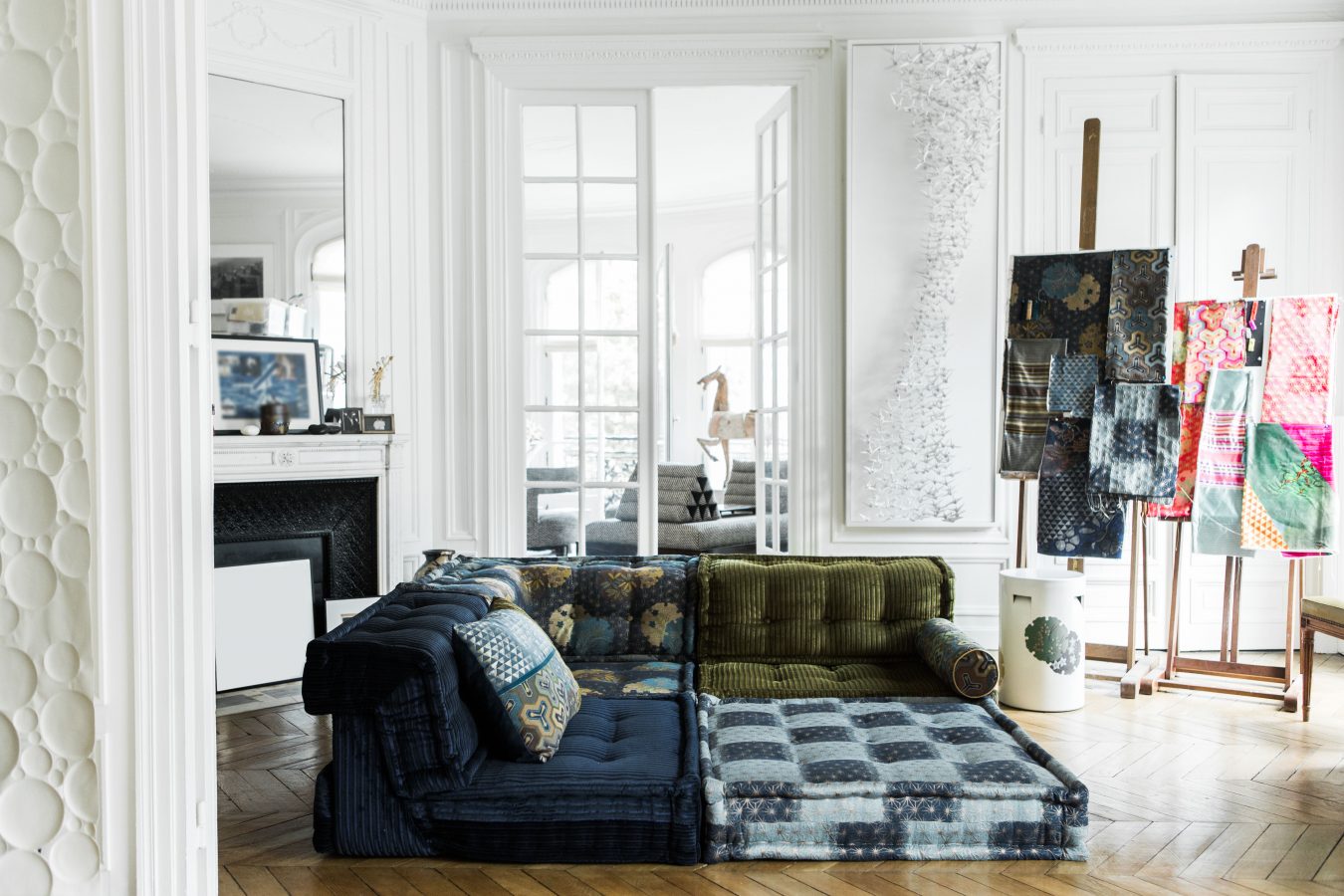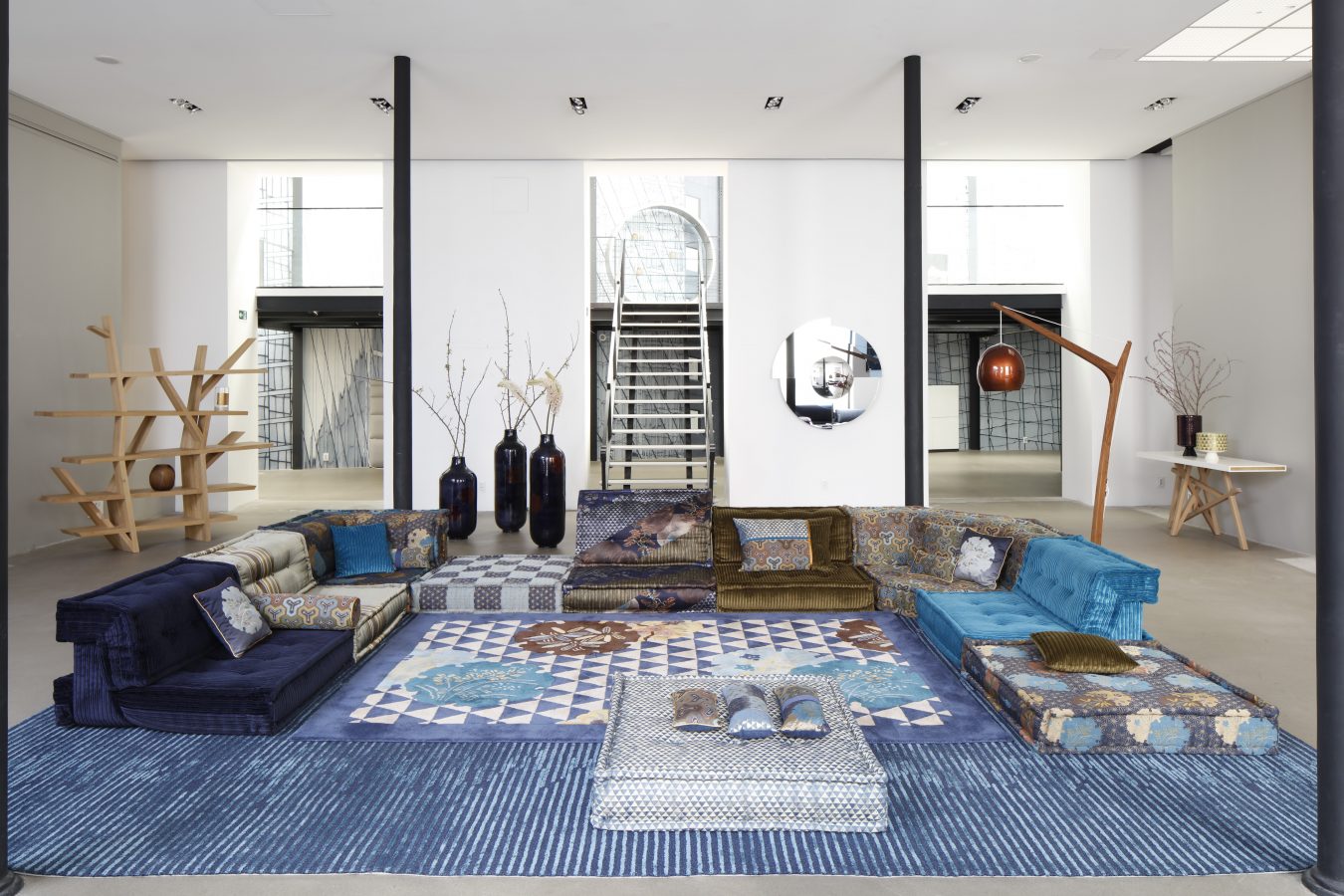Harmony is a word that Kenzo Takada uses often.
It is clearly one of his design principles, evident back when he was at the helm of his eponymous Parisian fashion label, right up to present day, now retired from Kenzo but involved in other creative projects. The latest on his resume is a collaboration with French furniture house Roche Bobois, and harmony certainly plays its part.
It all began with the legendary Roche Bobois Mah Jong sofa, for which Takada designed three fabric schemes: morning, called Asa; midday, called Hiru; and evening, called Yoru.
“I love working with the textiles,” he says through a French translator, over the phone from Paris. “The work of dressing up the already well established Mah Jong was very appealing to me, and was actually a lot of fun.” Taking inspiration from the ancient kimonos worn by performers in the traditional Japanese artform of Koh theatre—itself reliant on harmony for the highest level of presentation—Takada created lush, rich, and altogether stunning fabrics for the modular Mah Jong.
Takada has been travelling to his native Japan more and more these days, with the purpose of rediscovering and reconnecting with his roots. And Noh is arguably one of the most alluring, secretive, and detailed parts of Japanese culture. “I’ve always had a lot of admiration for this kind of theatre because it is acted mostly by men wearing masks,” he explains. “Their kimonos are very specific and have certain different graphics that give more texture, and the elements of the graphics are much stronger in Noh theatre than in regular kimonos.”
As such, each of the three Mah Jong themes plays with colour, pattern, and texture in creative and welcoming ways. In Asa, representing the early morning, shades are bright yet soft, with an emphasis on pinks and greens. It is cheerful, a beckoning of the day ahead. With afternoon’s Hiru, hues darken into rich reds with pops of teal and aqua, a midday respite if there ever was one. And in Yoru, the evening scheme, everything is draped in calming blues and silvers; there is a distinct sophistication here, but a sense of jovial spirit remains. Each of the three schemes is eclectic, interesting to look at, and yet decidedly integrated. No pattern or graphic feels out of place, and some of that eye for fabric can surely be credited to Takada’s clothing background. “Finding harmony among different elements and graphics and colours is similar with what I used to do in fashion,” he says. Still, it is furniture and home accessories design that give him the most excitement right now—which might be why for this collection, he didn’t stop at the Mah Jong.
To create a truly cohesive offering, Takada also designed throws and pillows, and even ceramics. “I really like to have depth in a collection, so I cannot only sell the Mah Jong because it’s difficult to place in an environment by itself,” he explains. “In order to integrate it, you need to have additional items that bring a certain depth to it. That’s why the ceramics were created.” And that is a lesson in harmony.
See more from our Design section.













